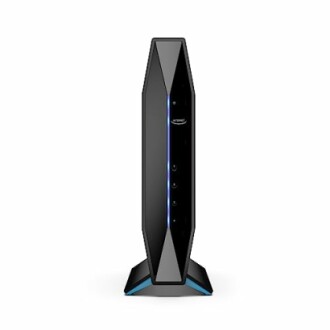
A Complete Guide to Wireless Networking Solutions for Home
Key Takeaways
- Understanding various wireless networking solutions enhances home office productivity.
- Choosing the right equipment like routers and extenders ensures seamless connectivity.
- Proper setup and placement of devices are crucial for optimal performance.
In today's world, having a reliable wireless network is essential, especially for those working from home. A well-set up wireless networking system can substantially boost productivity by ensuring a stable internet connection for all your devices. This guide will provide you with all the information you need about wireless networking solutions, including recommendations for trusted products that streamline your home office connectivity.
Why Wireless Networking is Important for Your Home Office
As remote working becomes increasingly common, the need for dependable wireless connectivity cannot be overstated. Wireless networking allows multiple devices to connect to the internet without needing to run cables everywhere, thus making your workspace cleaner and more organized. Furthermore, having a strong wireless connection can greatly improve collaboration, data-sharing efficiency, and overall work quality.
Essential Wireless Networking Equipment
Here are the key components of any good wireless networking solution:
- Router: The heart of your wireless network that connects all devices to the internet.
- Range Extender: Extends the coverage area of your Wi-Fi network, ideal for larger homes.
- Access Points: Provide additional access to the network and can be used in areas with poor coverage.
- Network Switch: Connects multiple devices to your router over the wired network.
Recommended Products
Linksys AX1800 Wi-Fi 6 Router
This router offers dual-band connectivity, covering up to 1,500 sq. ft. and supporting up to 20 devices at speeds up to 1.8 Gbps.
Learn MoreSetting Up Your Wireless Network
The following steps will help you set up a robust wireless network:
- Choose the Right Location: Place your router in a central location of your home to optimize coverage.
- Connect to the Internet: Use an Ethernet cable to connect your router to the modem.
- Configure Your Network Settings: Use the router's web interface to change the default network name and password.
- Install Range Extenders: If your home is large, place range extenders in areas with poor signal strength.
Micomlan LED Desk Lamp with Clamp
A versatile desk lamp offering ultra-bright lighting with a smart light sensor, perfect for any workspace.
Learn MorePros and Cons of Wireless Networking
Pros
- Flexible placement of devices without messy cabling.
- Supports multiple devices simultaneously.
- Easy to set up and manage.
Cons
- Possible interference from other devices.
- Signal strength can diminish with distance.
- Security vulnerabilities if not configured properly.
Secure Your Network
Security is vital in wireless networking. Here are some tips to keep your network safe:
- Change the default admin password of your router.
- Keep your router’s firmware updated regularly.
- Enable WPA3 encryption for enhanced security.
- Use a guest network for visitors to protect your main network.
Conclusion
Setting up a reliable wireless networking solution in your home office is essential for productivity and seamless connectivity. By choosing the right products and following proper setup guidelines, you'll be able to optimize your networking experience effectively. Explore [our buying guides](/blog/buying-guides) for more insights on home office essentials.
LED Desk Lamp for Office Home
Engineered with stepless dimming, this lamp is perfect for reading, studying, or working at your desk.
Learn MoreAdditional Resources
For further reading on optimizing your home office setup, check out these articles:


